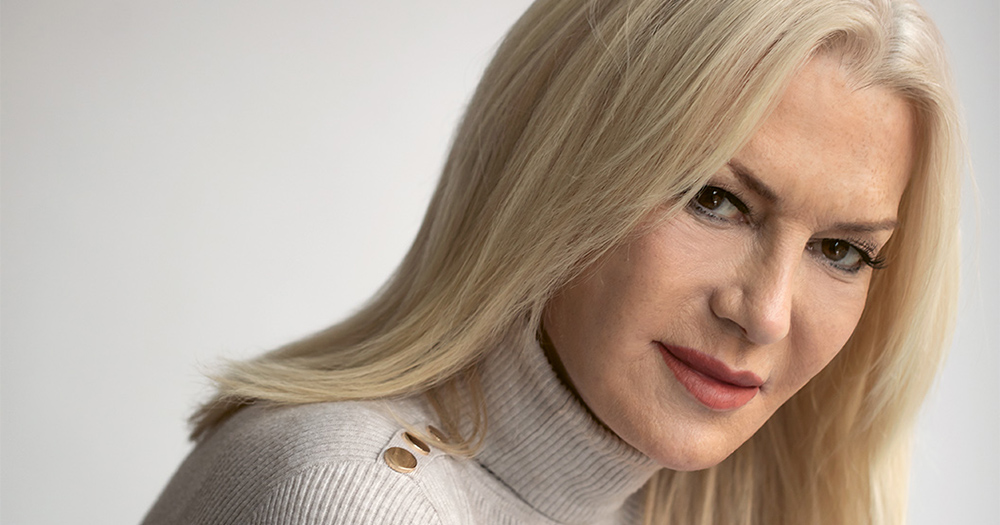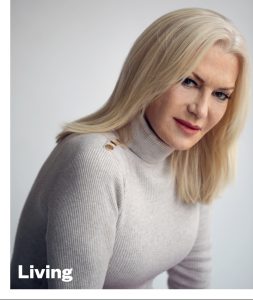After 40 years of HIV and AIDS, the Living exhibition was a milestone moment in Ireland’s HIV response. The exhibition highlighted the leadership role People Living With HIV contribute to the HIV response, particularly in relation to confronting and challenging stigma.
It challenged the narrative, to move away from outdated stereotypes and shift society’s perceptions. The powerful and inspiring collection of portraits were taken by the wonderfully talented photographer Hazel Coonagh.
The Living exhibition was launched with a special fundraising event on World AIDS Day hosted by national treasure, Panti Bliss. There were inspirational conversations with the portrait participants, who contributed their thoughts and provided words of encouragement and support to other people living with HIV across our shores.
While the exhibition has now closed, expect exciting news in the coming weeks on what lies ahead for Living.
Here are a handful of the wonderful people involved.
Rebecca Tallon de Havilland
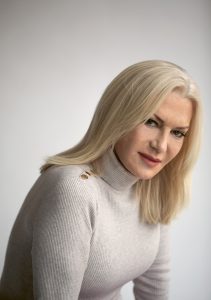
“The reason why I think we need to honour World AIDS day, for me more than anything, it’s for the people that we’ve lost. It’s for the people who weren’t as lucky as I was.
I was diagnosed at the time because I was going for a gender reassignment operation, which then was put on hold as I was given two years to live, and obviously I’m still here!
People ask me how do you feel you got to where you are today? You were diagnosed in ‘87 and medication didn’t really come out til ‘94,’ 96, whatever, and I think it was the will to be Rebecca that won. I’m convinced of that.
In the past I was told that I definitely had survivor’s guilt. At one stage on a weekly basis I would watch friends fall off my list to this cruel cruel disease as it was then. But people need to be aware now that you can live with it. The U=U campaign is huge and it’s amazing. For years I was undetectable but I never knew I was untransmittable. So for a long time I didn’t have relationships because I never knew I couldn’t transmit it to somebody else. When I do outreach now, I go up to a girl and tell her ‘if you’re HIV Positive, if you are undetectable, you can’t even pass it on to your unborn baby’, for me that’s next door to a miracle.
It’s really important to stay tested, we’ve got PrEP, we’ve got loads of things now, I think it’s important that we speak about it more, and we speak about it more publicly, because nobody is exempt from this, it doesn’t discriminate.”
Jordi Moya Roset
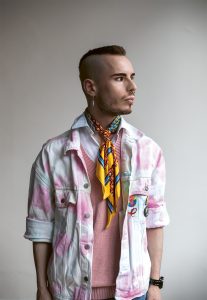
“I found out that I was HIV Positive when I was 18 (in 2017), and shortly before I started my career as Cabin Crew. My first thought was that I was going to die and that I wouldn’t be able to carry out my life plans because of the infection and the stigma. Back at that time, I didn’t have the knowledge or the resources that I have available to me now, and it took me some days to actually realise that I would have a normal life.
HIV has not prevented me from doing anything that I wanted. I worked, studied, travelled a lot and I had a perfect quality of life. HIV made me mature at an early stage of my adulthood and provided me with many great life lessons.
It feels good to know I’m playing my part, even if it’s just providing my testimonial or explaining to people what it means to be HIV Positive. I want to help prevent anyone from living with the fear of HIV or its stigma and aim to get people to speak up and give this reality more visibility to reduce the number of new diagnoses and to protect people from HIV and other rising STIs.”
Liz Martin
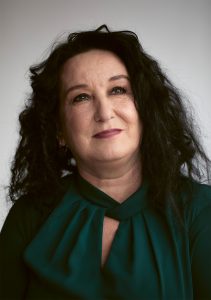
“I found out I was HIV Positive on December 13, 1991, almost 30 years ago to the day. I was 24 years-old and a single mother with four beautiful children. I was hoping the test would of course return negative, but in my heart of hearts, I knew the odds were stacked against me as I had been sick on and off. I had a baby that August and of course was worried sick that I had passed it on. Worst feeling ever as a mother.
Shortly after my HIV diagnosis, I had a consultation with another medical professional at the hospital. I decided it was best to write some questions down to ask him before going in. The last question on my list was: ‘What is the likelihood of me developing AIDS?’ His response stunned me into silence. ‘I will put it to you like this. You’re dying.’
So much has changed in that 30 years. I am not dying. I am living. I vowed to fight HIV and AIDS right from the start. I never thought I would see my children grow up. Everything was so grim and negative back then, with very little hope or prospect. Today, all my children are grown, and I am a proud grandmother of two. I never thought I would live to see this day.”
Tonie Walsh

“I became Poz at the age of 45 in 2005 and, although anticipating a positive diagnosis, was initially floored by the news. A mixture of guilt at having survived the AIDS pandemic, and anger at ‘allowing’ myself to become infected overwhelmed me. Then I picked myself up, decided to tell everyone as quickly as possible and get on with my life. I’m forever grateful that I’ve survived when a good half of my friends didn’t.
Society’s capacity for better understanding, compassion and acceptance of HIV and AIDS is progressing apace and this fills me with joy and hope. The exhibition, and the imperative underpinning it, is a stark reminder that we must work ever harder in accommodating HIV in all its colours; ethnic and gender diversity remains under-represented.
Caveats aside, I see the value of the exhibition as a calling card of sorts and I’d like to think that someone who’s Poz (and not out publicly) may see these wonderful images and feel more inclined to be part of another such exhibition further down the line. And not forgetting the conversations these images will invariably evoke.”
Barbara Lunga
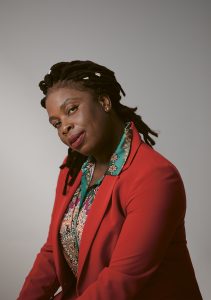
“I was diagnosed in 2010. I was in shock, I couldn’t believe it. And then my shock was like, ‘What am I going to say to my husband?’ He had a lot of pride, and I was like, how am I going to say this to him, and then also with grown-up children? So it took me some time to believe that I was HIV Positive. What really affected me most, was my parents passed away a long time ago, and I had no one to share this with.
Now, I’m enjoying my life. It’s like any other disease because it’s not a death sentence. I normally go out, I enjoy life, I socialise, I get a lot of support from the social group. So, I’m okay. I’m happy even to talk about it.
I’m living a normal life, and I’m so beautiful -I like myself despite the HIV thing. I know my status, and I would encourage those people who don’t know their status to go and have a test.”
Conor Anderson

“I was diagnosed with HIV in April, 2010, while I was in my junior year of college in LA. My initial reaction was bad, to put it mildly. I was closeted, I was an active alcoholic and drug user, and I felt my life was over. Although the medical prognosis was good at the time, this was before U=U and so I was told repeatedly that I posed a threat to my sexual partners.
The funny thing about HIV for me, is that my daily life has actually been only ever mildly impacted by the actual virus itself. The pain and suffering of HIV has always stemmed primarily from the stigma, both social and internalised. Now, I’m in a loving relationship, I’m sober, and I’ve done enough work to put myself back together, so life is great.
The 21 year-old version of me swore up and down that he would never, ever tell anyone about his status. The fact that I can be open about this part of my life is huge, and I hope that anyone reading this, who is maybe struggling in the closet with something, can take heart from that. I’m doing now what I needed to see other people doing back then.”
For exciting future news about the Living exhibition, keep up to date with GCN.
This article originally appeared in GCN Issue 369 which you can read in full here.
© 2021 GCN (Gay Community News). All rights reserved.
This article was published in the print edition Issue No. 369 (December 3, 2021). Click here to read it now.
Support GCN
GCN is a free, vital resource for Ireland’s LGBTQ+ community since 1988.
GCN is a trading name of National LGBT Federation CLG, a registered charity - Charity Number: 20034580.
GCN relies on the generous support of the community and allies to sustain the crucial work that we do. Producing GCN is costly, and, in an industry which has been hugely impacted by rising costs, we need your support to help sustain and grow this vital resource.
Supporting GCN for as little as €1.99 per month will help us continue our work as Ireland’s free, independent LGBTQ+ media.
